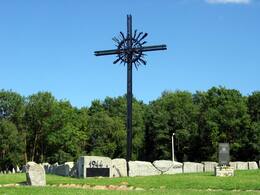The Battle of Sinimäe (the Blue Hills)
This battle carries a broader ideological meaning. “It was the first instance after the occupation of Estonia in 1940 of Estonians showing opposition to the Red Army on such a scale," says historian Toomas Hiio from the Estonian War Museum of History “It was largely driven by desire for revenge. That was how wartime propaganda portrayed it, but propaganda tends to derive from what's actually going on. Contemporary popular history books have somewhat exaggerated the Estonian contribution, as though a couple of Estonian battalions single-handedly held the front. I wrote an article back in 2005 in which I determined that since the Germans had relocated some of their forces to the more critical Belarusian front and some to Finland, half the infantry troops were Estonian by July 1944. But the infantry weren't alone: there were also artillery, special forces and many others."
https://pohjarannik.postimees.ee/6594548/ainuke-paik-kus-punaarmee-1944-aastal-kuudeks-seisma-pandi
Related objects
Sinimägede (Blue Hills) battlefield memorial
This memorial is situated on the western slope of Grenaderimägi Hill in the Blue Hills near the old Vaivara cemetery.
It symbolises the battle fought in the Blue Hills during World War II between Soviet and German forces.
The first monument in the Blue Hills area – a 6.5-metre wooden cross – was erected here in 1994. The current memorial was completed in 2000. The 12-metre steel cross, which towers over a hectare of land, was designed by artist and blacksmith H. Müller. In the middle of the cross is a composition depicting an explosion. In 2004, a monument in honour of the 20th Waffen Grenadier Division was added to the memorial. Two years later, monuments commemorating the Dutch and Walloon volunteers who fought alongside the Estonians were added.
Grenaderimägi Hill regularly changed hands from one battle to the next. The last point of defence, known as the ‘Hellhole’, was around 100 metres to the east of the memorial cross.





